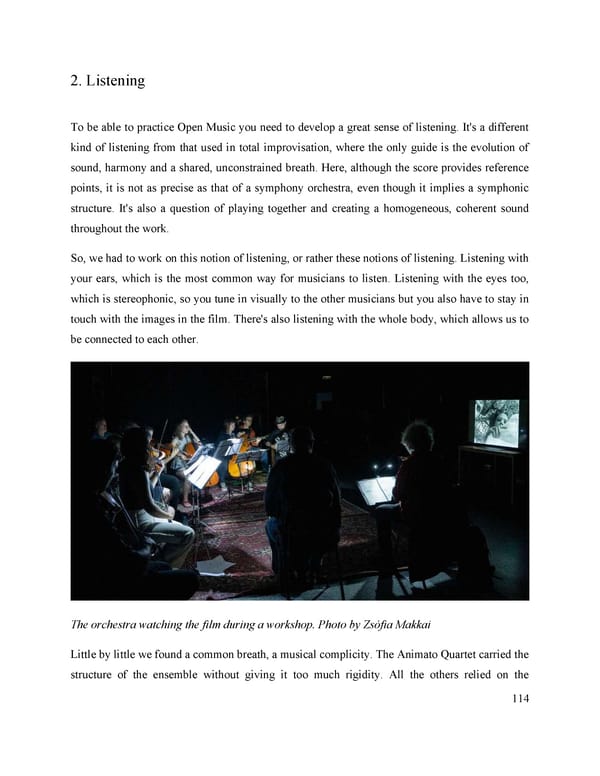2. Listening To be able to practice Open Music you need to develop a great sense of listening. It's a different kind of listening from that used in total improvisation, where the only guide is the evolution of sound, harmony and a shared, unconstrained breath. Here, although the score provides reference points, it is not as precise as that of a symphony orchestra, even though it implies a symphonic structure. It's also a question of playing together and creating a homogeneous, coherent sound throughout the work. So, we had to work on this notion of listening, or rather these notions of listening. Listening with your ears, which is the most common way for musicians to listen. Listening with the eyes too, which is stereophonic, so you tune in visually to the other musicians but you also have to stay in touch with the images in the film. There's also listening with the whole body, which allows us to be connected to each other. The orchestra watching the film during a workshop. Photo by Zsófia Makkai Little by little we found a common breath, a musical complicity. The Animato Quartet carried the structure of the ensemble without giving it too much rigidity. All the others relied on the 114
 Lost Analogue: Exploring Film, Music, and Interdisciplinary Methods in Education Page 114 Page 116
Lost Analogue: Exploring Film, Music, and Interdisciplinary Methods in Education Page 114 Page 116